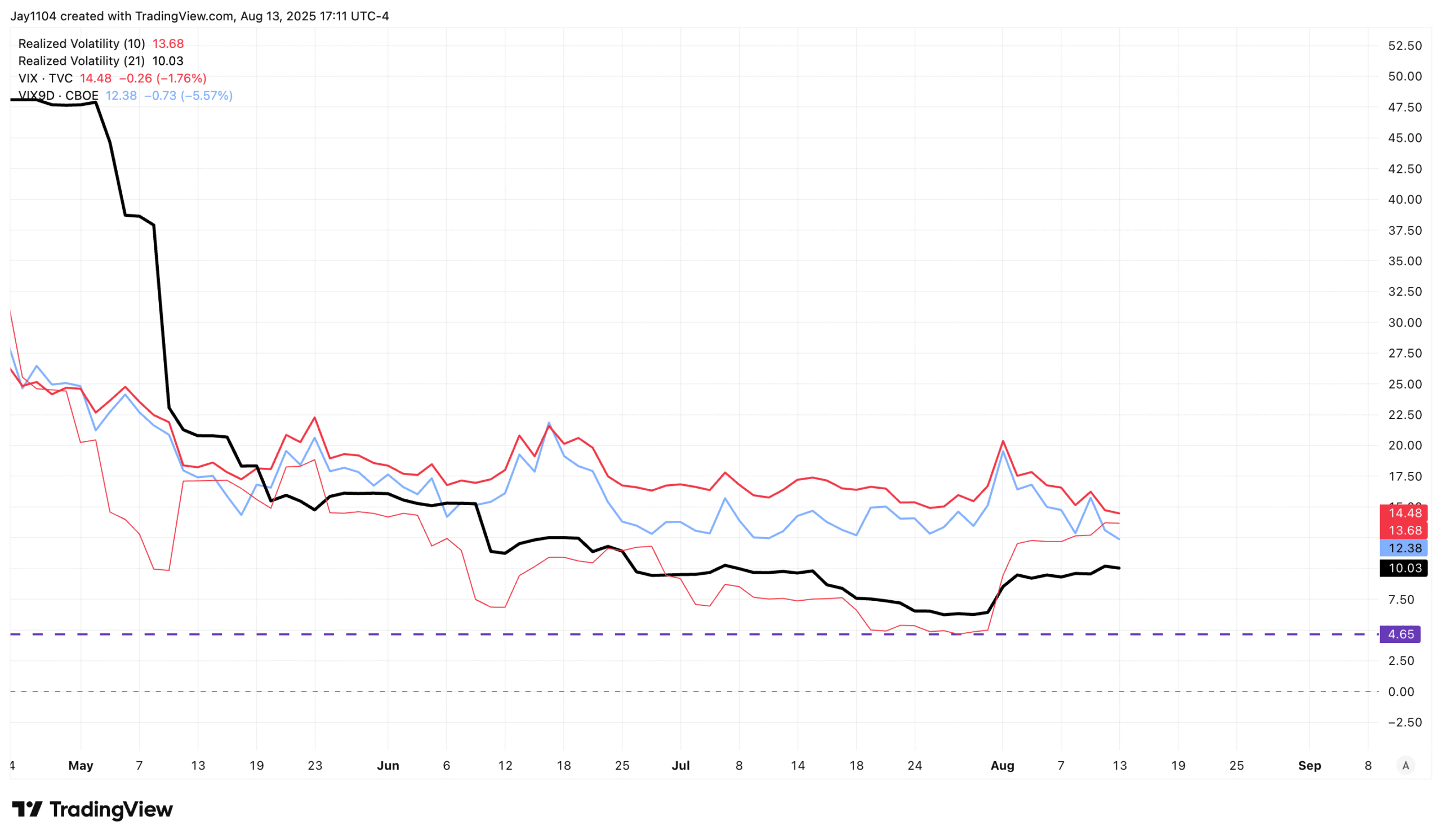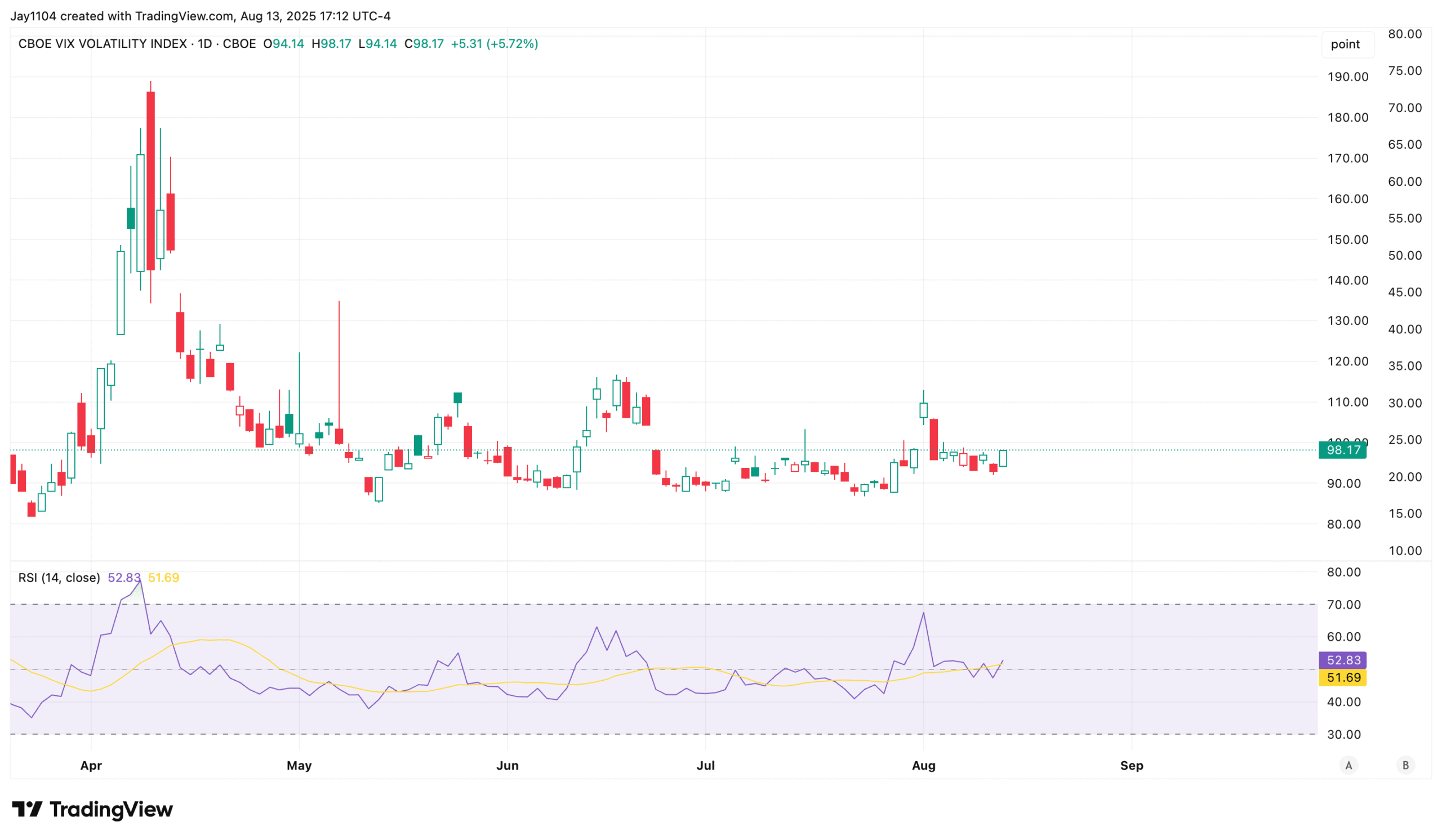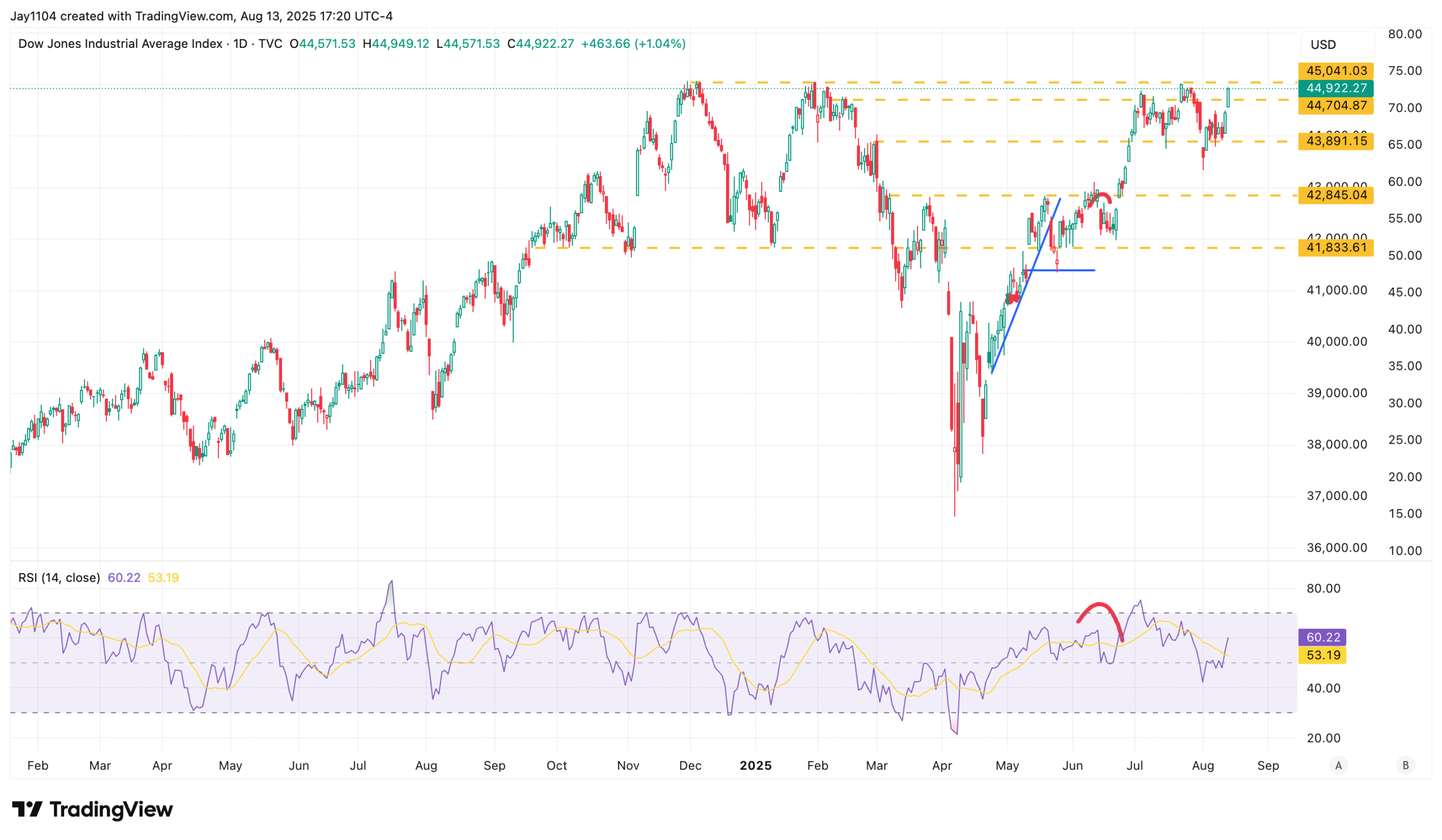Webull beats Q3 expectations as revenue jumps 55% on strong trading
It feels like one of those moments when the anticipation becomes almost overwhelming — you just want the event to happen. For me, that moment arrives in a few days, as Treasury settlements continue to drain liquidity from the market, the Reverse Repo facility falls from its current $50 billion level, and reserves begin to decline as the Treasury issues its full slate of T-bills.
To be clear, this is not a call for a market crash. However, if liquidity has been the key driver of recent gains, the coming days should offer a clear read on where conditions truly stand. As of August 12, the TGA sits around $550 billion and still needs to rise to $850 billion.
Realized and implied volatility are converging, with 10-day realized volatility now above the 9-day VIX, while 21-day realized volatility and the VIX}
continue to move toward one another.
This likely explains why the VVIX rose on Wednesday, climbing above 98. If the VVIX continues to rise, it would signal that the VIX is likely to follow.
The DJIA is now approaching a potential breakout. Resistance at 45,000 has been a major hurdle since January, and this marks the fifth attempt to clear it. Whether it succeeds this time remains uncertain. More importantly, the setup highlights the divergence between the S&P 500’s heavy dependence on Nvidia and an average like the Dow, which is not reliant on Nvidia’s performance.
